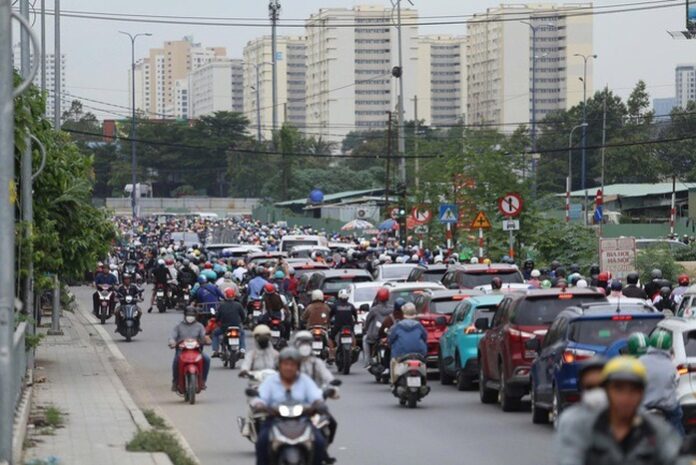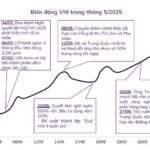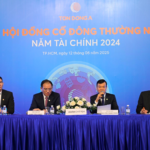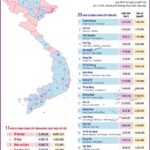Vietnam’s Administrative Units Restructured: A 2025 Update
On June 12, 2025, the National Assembly passed a resolution to restructure provincial-level administrative units, reducing the number from 63 to 34.
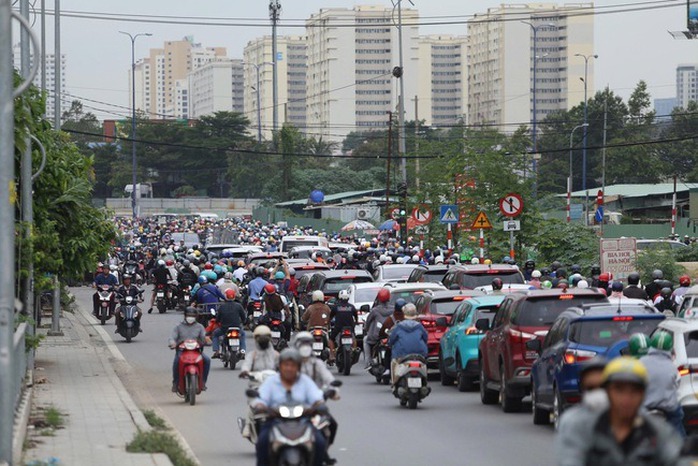
Ho Chi Minh City’s population post-merger exceeds 14 million. Image: NLDO
This restructuring has brought about changes in the largest and smallest provinces in terms of area. Lam Dong province, formed by the merger of Lam Dong, Dak Nong, and Binh Thuan, has become the country’s most extensive locality with an area of over 24,200 km². The new province stretches from the highlands to the South Central Coast, bordering Cambodia to the west and the East Sea to the east.
Following Lam Dong in size is the new Gia Lai province, spanning an area of 21,576.5 km². Prior to the administrative restructuring, Nghe An province held the title of Vietnam’s largest province, covering an area of over 16,489 km².
On the other hand, Hung Yen province, formed by the merger with Thai Binh province, has emerged as the smallest province in terms of area, covering 2,515 km². Notably, Hung Yen has also become a coastal province due to this merger.
In terms of population, Ho Chi Minh City takes the lead with over 14 million residents following its merger with Binh Duong and Ba Ria-Vung Tau provinces. Prior to the merger, the city was home to nearly 10 million people. Currently, Ho Chi Minh City stands as the only locality in Vietnam with a population surpassing 10 million.
In contrast, Lai Chau province, with a population of just over 512,000 people, holds the distinction of being the least populous province in the country. Lai Chau was one of the provinces unaffected by the recent administrative restructuring. Located in the mountainous region of Northwest Vietnam, the province covers an area of nearly 9,070 km², with a population density of 57 people per km² as of 2024, the lowest in the country.
Among the 34 new provinces and cities, Hanoi boasts the highest population density. With an area of approximately 3,360 km² and a population of over 8.8 million, Hanoi’s population density stands at more than 2,620 people per km². Ho Chi Minh City and Haiphong follow closely with densities of nearly 2,070 and 1,460 people per km², respectively.
Prior to the merger, Ho Chi Minh City had the highest population density in the country. However, with the inclusion of Binh Duong and Ba Ria-Vung Tau, its land area more than tripled to over 6,770 km², while its population increased by less than 1.5 times to over 14 million.
Out of the 34 restructured provinces and cities, four have populations below one million: Lai Chau, Cao Bang, Dien Bien, and Lang Son.
With the reduction from 63 to 34 provinces and cities, Vietnam now has six municipalities under the central government: Hanoi, Ho Chi Minh City, Haiphong, Hue, Danang, and Can Tho. Among these, Hue is the least populous, with approximately 1.43 million residents. Both Hanoi and Hue retained their status as municipalities during the administrative restructuring.
The Strategic Alliance: Bach Phuc and SBC Medical Group Japan
“The prestigious Company for Import, Export, and Trade, Bach Phuc (Vietnam), and SBC Medical Group (Japan) have entered into an exclusive strategic partnership. This exciting collaboration aims to bring an extensive range of premium Japanese cosmetic and medical products directly to the Vietnamese market. With this partnership, the advanced medical solutions of Japan are now more accessible to the Vietnamese community, offering an enhanced quality of life.”
“Shareholder Meeting of Tôn Đông Á: Steel Trade Flows are in Turmoil, with a Focus on the Domestic Market Aiming for a 75% Share.”
With a steadfast determination to ascend in the industry, Ton Dong A envisions a strategic shift to the Ho Chi Minh Stock Exchange (HoSE). This move is accompanied by ambitious plans to invest in a new plant, dubbed ‘Plant 4,’ with a formidable capacity of 1.2 million tons per annum. This decisive step propels the company deeper into the value chain of the prestigious coated steel industry.
“Sacombank Embraces ‘Cashless Day 2025’ to Boost the Digital Economy”
Sacombank is proud to continue its leadership in driving modern consumer behavior by sponsoring the “No Cash Day” initiative in 2025. As a Silver Sponsor, we are thrilled to partner with the Payment Department, the Banking Times, Tuoi Tre Newspaper, the Ho Chi Minh City Department of Industry and Trade, and the National Payment Corporation of Vietnam (Napas) to promote a cashless society and accelerate the growth of the digital economy.


























